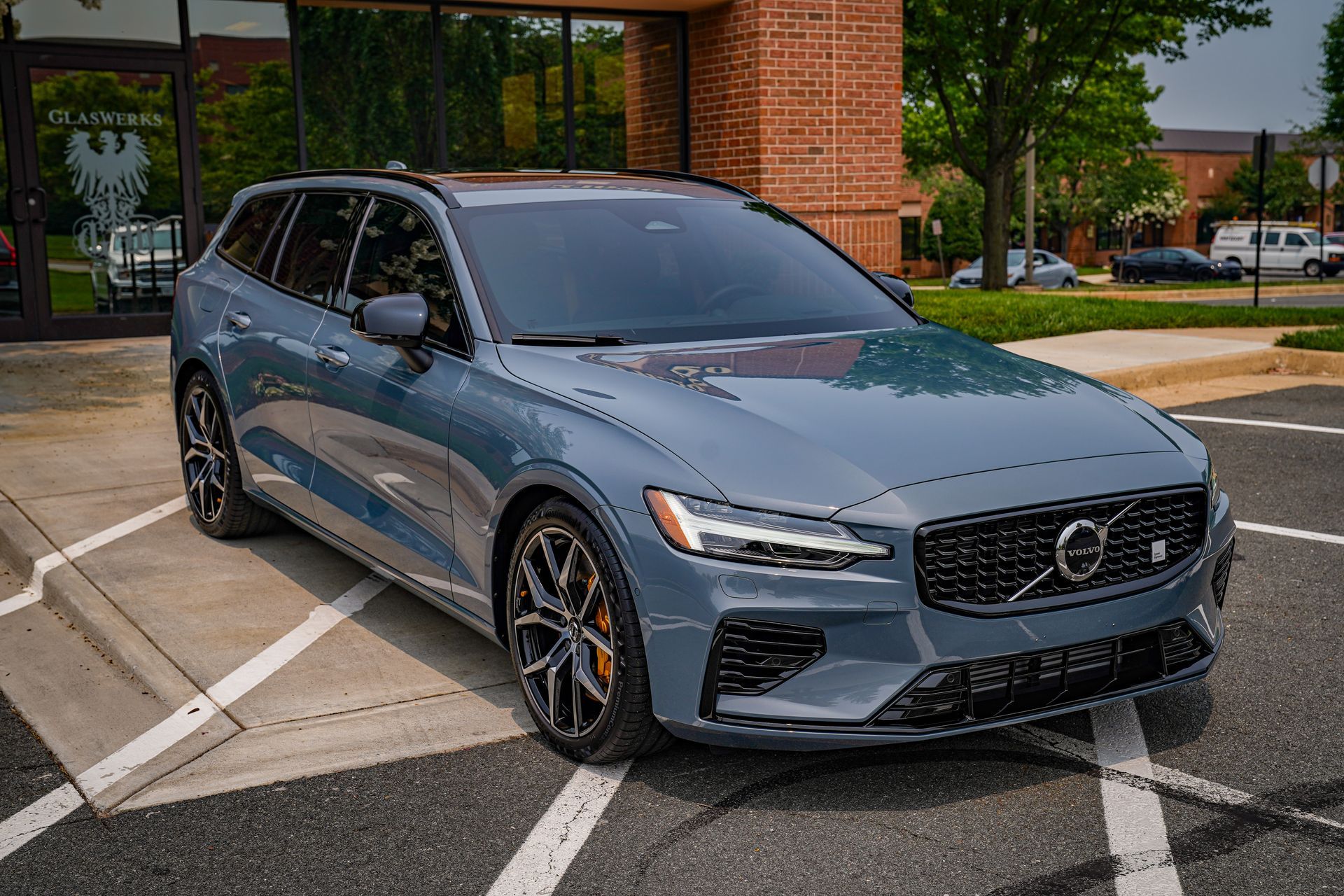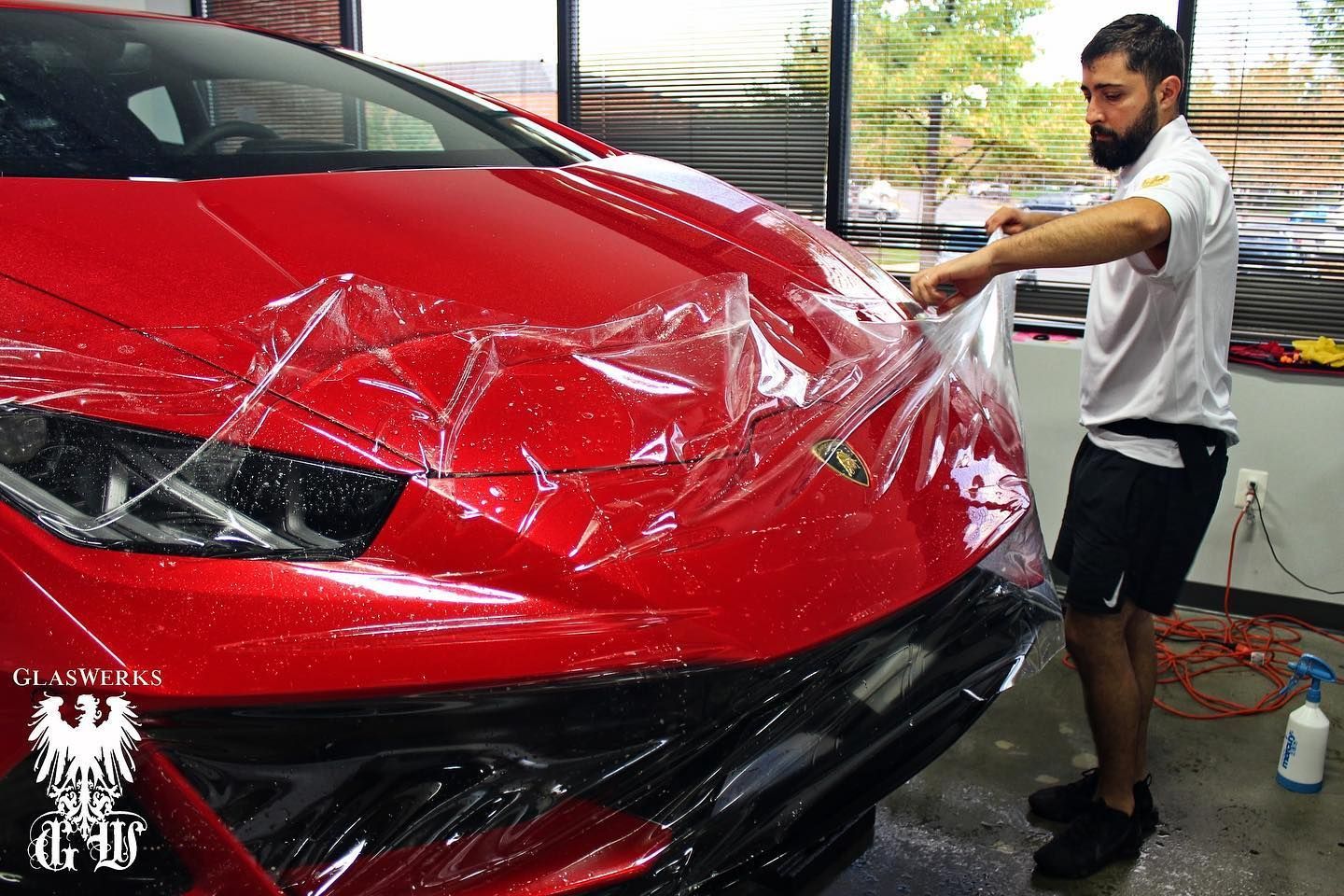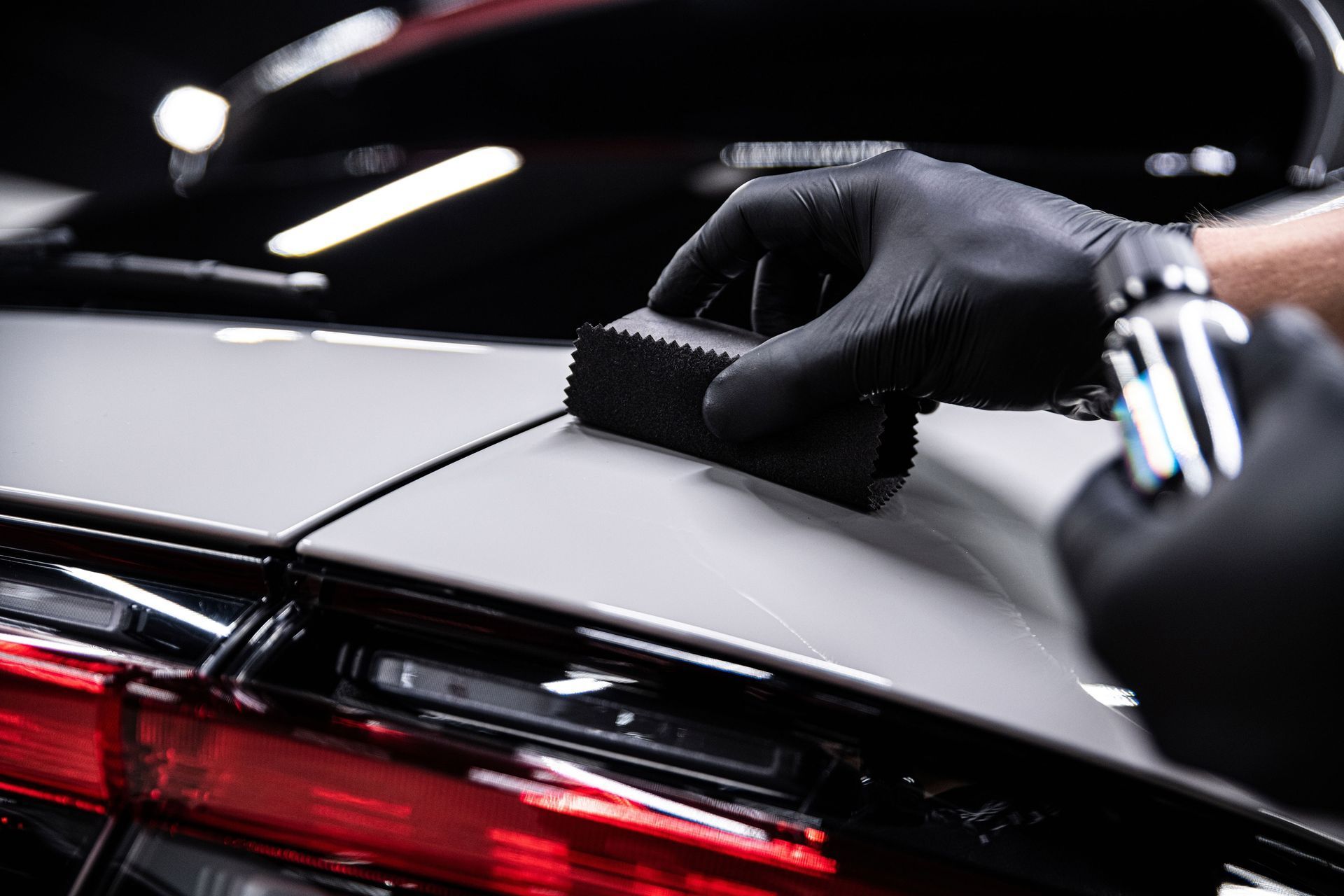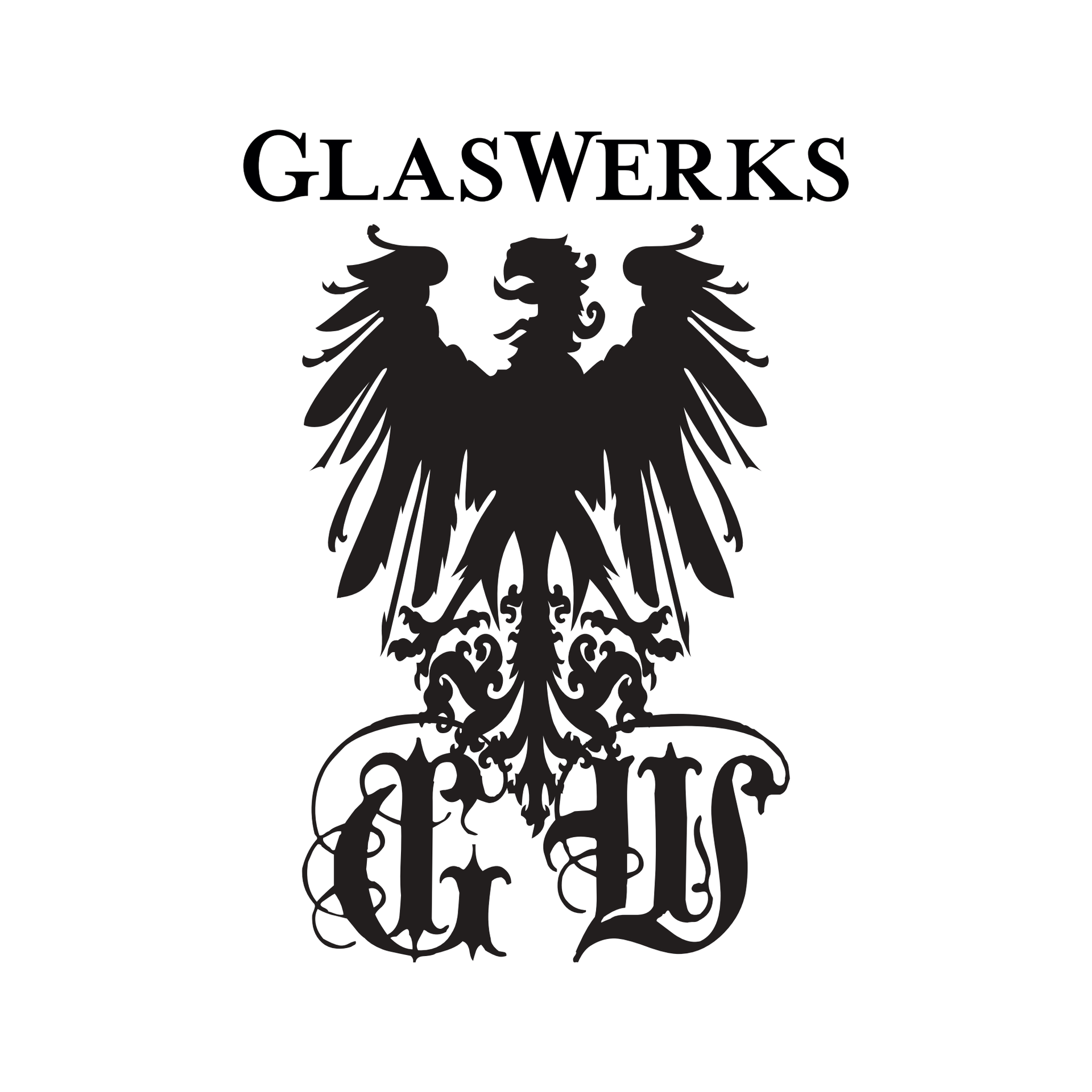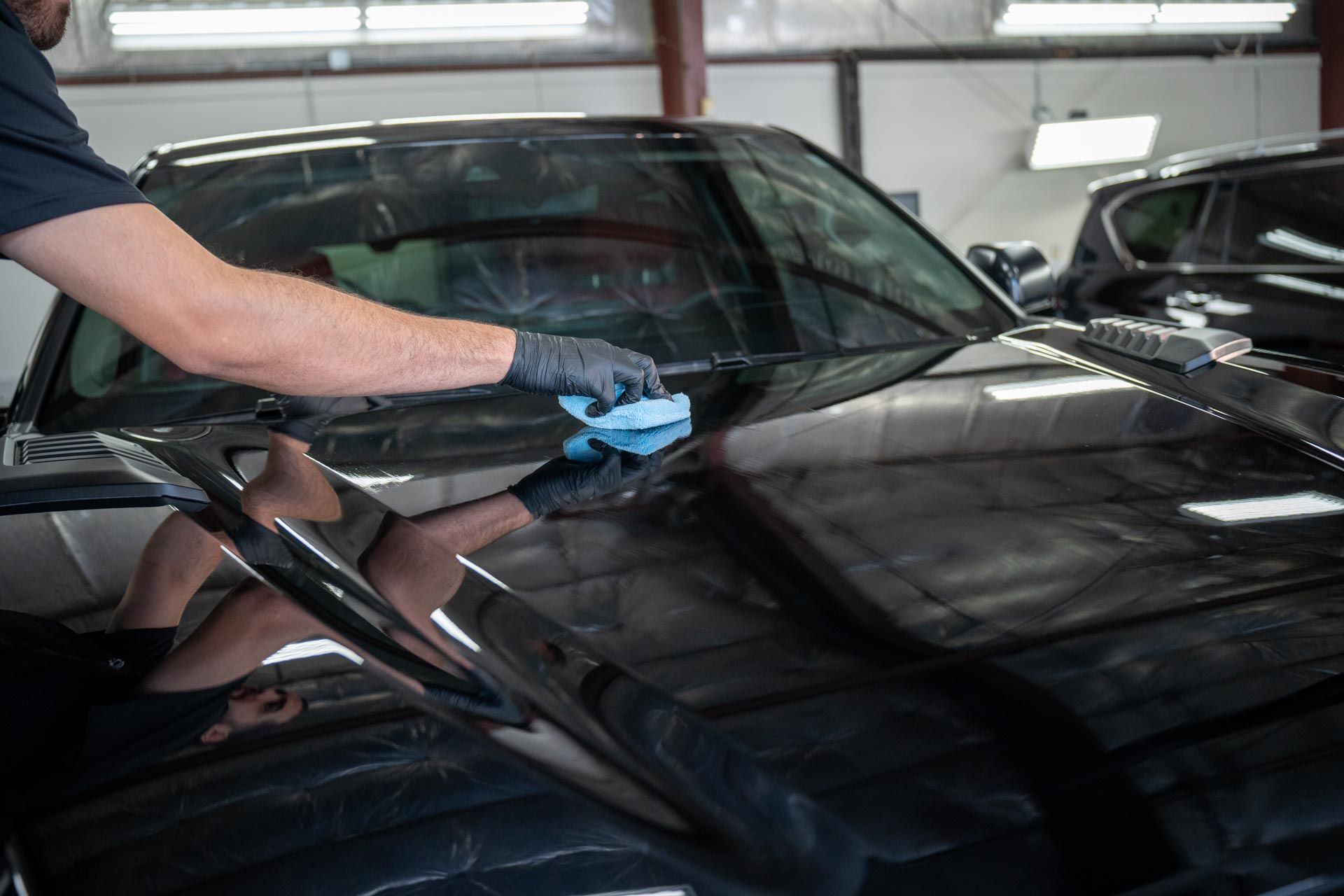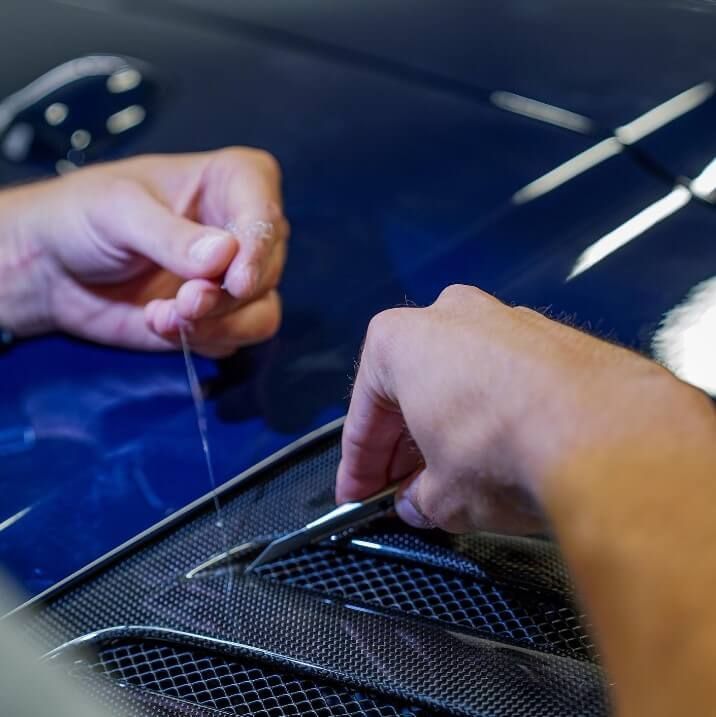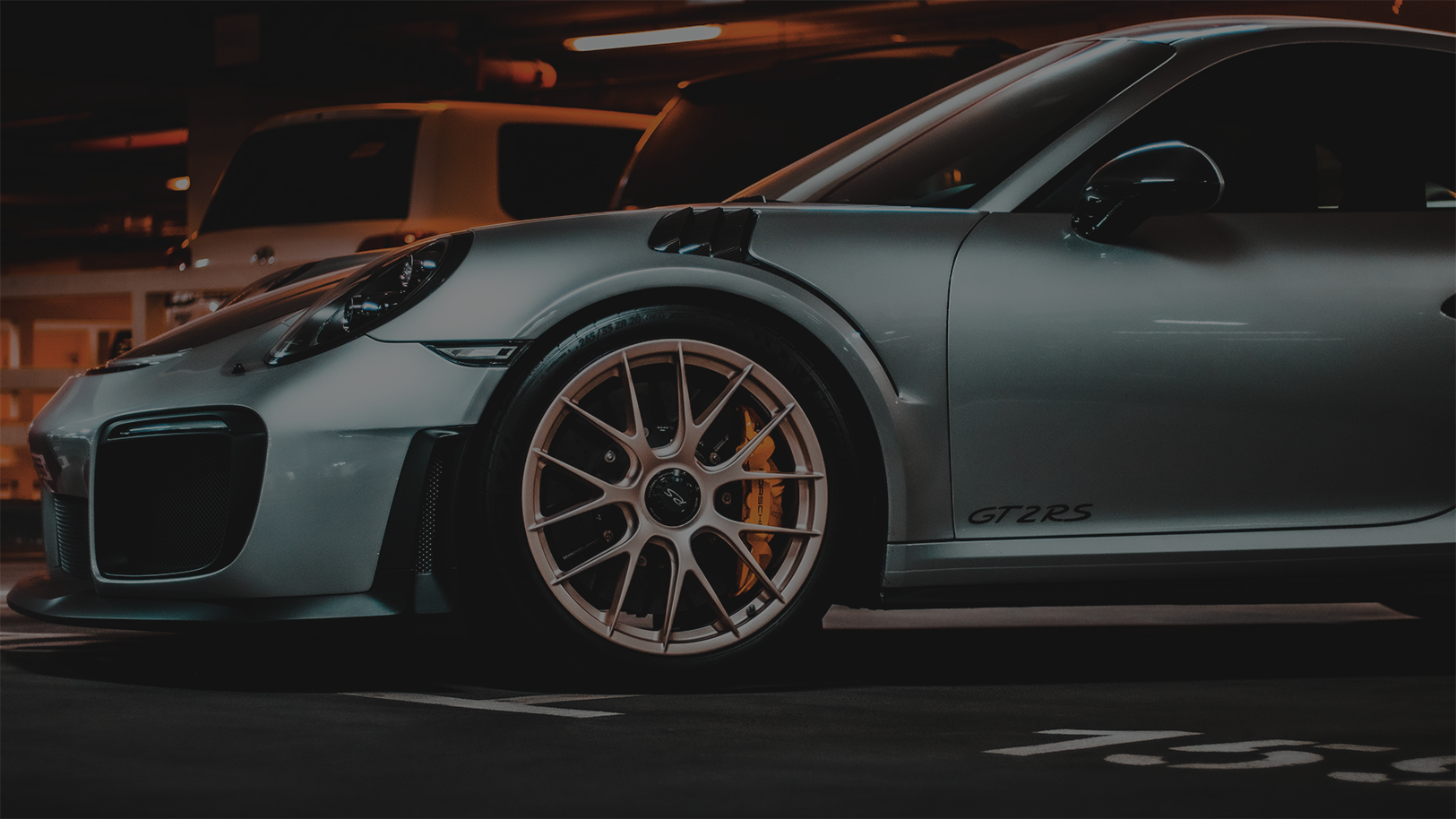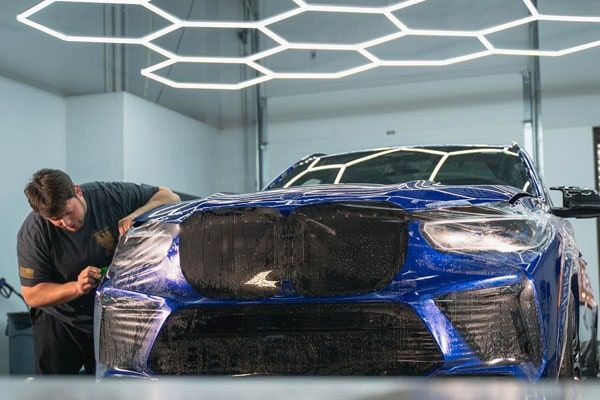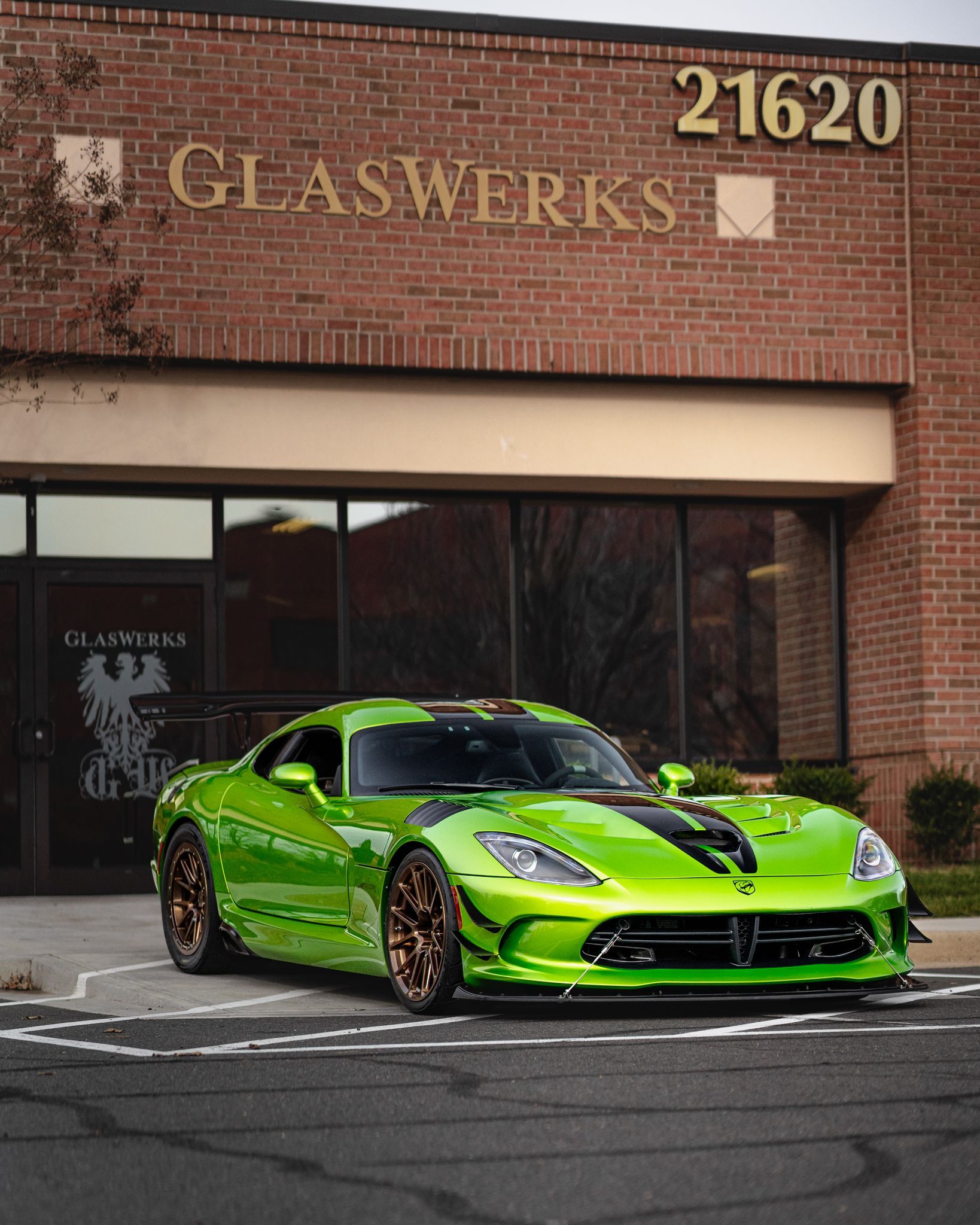When it comes to keeping your car looking fresh and protected, the choices can be overwhelming. Should you invest time and money in a ceramic coating or stick with the traditional wax? Both options have their pros and cons, but understanding the key differences can lead you to the best decision for your vehicle's needs. Let’s dive into what makes ceramic coating and wax unique so you can choose the right protection for your ride!
Ceramiccoating is generally considered better for long-term protection due to its durability, lasting 2-4 years with proper maintenance, while wax typically lasts only a few weeks. However, if you prefer a deep gloss finish and enjoy regular upkeep, wax can still offer aesthetic benefits; ultimately, the choice depends on your priorities between lasting protection and visual appeal.
Ceramic Coating vs. Wax: Key Differences
- Chemical Composition: When it comes to the chemistry behind these protective products, the differences are striking. Ceramic coatings contain a high percentage of silicon dioxide (SiO2), a compound that chemically bonds with your vehicle's paint, essentially becoming one with it to form a long-lasting shield. This bond is one of the reasons why ceramic coatings can withstand harsher conditions than their wax counterparts. In contrast, wax—whether natural or synthetic—functions differently by merely sitting on the surface of your car’s paint. It creates a temporary barrier that, while effective against environmental contaminants, lacks the durability and protection provided by ceramic coatings.
- Application Process: The application process reflects these differences in composition as well: Applying a ceramic coating is inherently more complex. Achieving the best results requires a perfectly polished and clean paint surface to prevent imperfections. Because of this, many car enthusiasts opt for professional application services; they understand that precision is key. On the other hand, wax is considerably easier to apply, making it accessible for do-it-yourselfers. However, this ease does come at a price—the need for frequent reapplications to maintain that just-waxed look. You might find yourself buffing and reapplying wax every few weeks rather than enjoying the long-term protection that ceramic provides.
- Cost: Financial considerations can also play a role in this choice. A professional-grade ceramic coating typically ranges from $500 to $2,000 based on the quality of the product and skill of the service provider. While this might seem steep compared to waxing—which averages between $20 and $100—it’s important to look at the longevity factor. Frequent waxing costs can accumulate over time, making those initial savings seem insignificant in light of continual maintenance efforts.
Knowing these key distinctions aids in understanding not only what you’re paying for but also how much effort you're willing to invest in maintaining your vehicle's appearance. With these factors in mind, considering the lifespan of each option will further clarify which method suits your needs best for protecting your vehicle's finish.
Durability and Longevity Comparison
Ceramic coatings and wax differ significantly not just in how long they last but in their resilience against everyday challenges. When you think about durability, consider it as more than just the number of months or years a product remains effective; it's also about how well it withstands environmental factors like UV rays and chemicals.
Ceramic Coating
High-quality ceramic coatings are engineered for endurance. Typically, they can last between 2 and 5 years, with premium products extending up to 10 years when maintained properly. Imagine sitting under a relentless sun; your paint job remains untouched, as ceramic coatings are remarkable at resisting UV rays that can cause fading and oxidation. They bond firmly with your vehicle's surface, creating a protective layer that is resistant to environmental contaminants.
This unique bonding means that every time you encounter bird droppings or tree sap, the coating repels these elements, making cleanup much easier. Over time, they require only regular hand washing and occasional applications of specialized sealants to maintain peak performance, cementing their place as a long-term investment for car owners who value both aesthetics and protection.
Wax
On the other hand, wax introduces its own set of challenges regarding durability. Traditional carnauba wax, often heralded for its gloss and finishing appeal, typically lasts around 3 to 8 weeks, depending on driving conditions and weather exposure. For those seeking extended protection, polymer-based waxes can push this longevity to about 6 months, yet they still struggle to rival the robustness of ceramic coatings.
While wax gives your vehicle an eye-catching shine upon application, it does so without providing substantial resistance against harsher elements. For instance, multiple road salts in winter or acidic raindrops can quickly degrade its protective qualities.
Understanding both the longevity and durability of these options arms you with the knowledge needed to choose what best fits your lifestyle. The ongoing quest for enhancing your vehicle’s appearance continues with exploring ways to achieve that sought-after gloss and finish.
Achieving the Perfect Gloss and Finish
When it comes to vehicle detailing, achieving a stunning gloss is often at the forefront of every enthusiast's mind. Carnauba wax prides itself on delivering a deep, rich glow that many describe as a “wet-look.” This effect is particularly sought after for show cars, drawing admiring glances from passersby and making paint jobs look strikingly vivid. The natural oils in carnauba create a luster that is difficult to replicate with synthetic products; however, this brilliance comes at a price—after just a few weeks, you may find yourself reapplying to maintain that coveted sheen.
On the other hand, ceramic coatings offer a different approach to gloss. They provide a sleek, glass-like finish that leaves your vehicle looking immaculate without the constant upkeep required with wax. These coatings work on a molecular level to bond with the vehicle’s paintwork, creating an ultra-smooth surface that reflects light beautifully. The result? An incredibly glossy appearance that lasts significantly longer than conventional wax—often up to four years or more.
Real-World Impact
It's important to note that while both products enhance shine, they differ in their ability to protect against environmental hazards. Wax offers some defense against water spots and UV damage but fades quickly due to exposure. Ceramic coatings provide much higher levels of chemical and UV resistance, ensuring not just aesthetic appeal but protective longevity. This means you get to enjoy that gorgeous finish while reducing the risks associated with everyday elements like bird droppings, tree sap, and harsh sunlight.
Your choice between these two options will ultimately hinge on your priorities—not just for appearance but also the ongoing effort you're prepared to devote to maintaining that look. Shifting gears now will help us compare how effectively each option stands up against environmental threats.
Levels of Protection: UV, Chemical, and Water Resistance
Your vehicle's paint faces multiple threats every day, ranging from harmful UV rays to dangerous chemicals and persistent water spots. It’s like a constant battle that your car fights against the elements; having the right protectant can make all the difference. Let’s take a closer look at how these two options stack up.
- UV Protection: Starting with UV protection, ceramic coatings truly shine. They create an impermeable barrier that not only provides a solid layer of defense but also prevents oxidation, which is one of the main culprits behind fading paintwork. When it comes to waxing, it does offer some shield against UV rays, but it requires frequent reapplication to maintain its effectiveness—typically every couple of months. Imagine sunscreen for your vehicle; if you don’t reapply it often enough, your skin (or in this case, your car's paint) suffers. Moving on from UV rays, we encounter another significant threat: chemicals.
- Chemical Resistance: Here’s where the battle intensifies—chemical resistance. Ceramic coatings are engineered to withstand tough adversaries like bird droppings, tree sap, and road salts that could wreak havoc on your car's finish. The advanced nanotechnology in these coatings allows them to repel such contaminants effectively. On the flip side, car wax tends to be much weaker; it breaks down when faced with harsh chemicals over time. Think about this aspect as you navigate urban environments or park beneath trees—what happens when your clean car becomes a target for nature’s critters? Lastly but certainly not least, let’s discuss what happens when water meets our surface of interest.
- Water Resistance: In terms of water resistance, ceramic coatings take the lead once again. They feature remarkable hydrophobic properties that allow water to bead up and roll off effortlessly, taking dirt and grime along for the ride. This enhances your vehicle’s looks and means less time spent washing and drying your car! Conversely, while wax offers some level of water resistance, it's not nearly as effective. If conditions are rainy or you frequently drive through puddles, rely on ceramic coating for superior performance.
As we explore the differences further, considering how each option fits into your routine will provide valuable insight into their maintenance needs and overall cost implications.
Maintenance Effort and Costs Involved
Maintenance Routines
When it comes to keeping your car looking its best, the methods you choose play a pivotal role in how much effort you’ll need to put forth. Ceramic coatings stand out because they generally require less frequent maintenance. Hand-washing once a month is usually sufficient to eliminate debris and contaminants without compromising the protective layer. This is particularly appealing for those who lead busy lives and prefer low-maintenance solutions. In contrast, car wax demands a more hands-on approach. You’d be looking at reapplying wax every few weeks or months, depending on driving conditions and exposure to elements such as sun and rain. The labor involved can be significant, especially if you want to ensure even coverage on the surface. Imagine diligently buffing away at every nook and cranny, only to know that in a matter of weeks, you'd be back at it again—it can feel like a never-ending cycle.
Cost Implications
Now, let’s talk about costs because this aspect often weighs heavily on many vehicle owners. Ceramic coatings may come with an initial price tag that's noticeably higher compared to wax treatments; however, they can provide better long-term value when you factor in maintenance expenses over time. While wax appears cheaper upfront, consider this: you'll spend more money overall due to frequent replications needed to maintain its protective quality. The truth is, those costs can add up quickly—much like fulfilling a subscription that you didn't realize would hit your wallet so hard.
For instance, while you might initially pay around $100 for a decent wax product, redoing that job every month could easily push annual spending well beyond what you might spend on a ceramic coating application lasting several years. This is certainly something that anyone considering their options should keep in mind. With both options offering distinct advantages and challenges, understanding which factors matter most will guide your choice moving forward. Considerations about maintenance and cost are just the beginning of what you’ll want to explore next.
Which Option is Right for You?
When it comes to choosing between ceramic coating and wax, it's essential to evaluate what you truly need from your vehicle's protection. If you're someone who values long-lasting results and doesn't mind a higher initial investment, ceramic coating might be the way to go. This high-tech option offers durability that can last anywhere from two to five years with proper maintenance, shielding your car from UV rays and chemical stains effectively. It’s perfect for individuals who drive their vehicles frequently and want a hassle-free approach to upkeep.
Evaluate Your Priorities
Now ask yourself: Are you willing to put down a larger sum for this peace of mind? If the answer is yes, ceramic coating provides you with low-maintenance care in the long run. However, if you’re drawn to a more traditional enhancement or love the feel of washing your car regularly, wax could be appealing. Wax typically offers a rich, deep gloss finish that many enthusiasts adore. This finish gives the car that shiny, ‘wet’ look while allowing for easy touch-ups, though wax requires frequent reapplication every few weeks.
The ritual of applying wax can be enjoyable for those who take pride in their vehicle’s appearance. This relationship fosters a stronger connection between the owner and the car—a labor of love, if you will. However, keep in mind that constant exposure to the elements can diminish its protective qualities over time.
Personalized Factors
Let’s bring it closer to personal experience. For daily commuters who face traffic and grit daily on their vehicles, choosing ceramic coatings often proves ideal because they want reliable protection without additional hassle. On the other hand, show car owners or weekend warriors who appreciate the meticulous detailing process may prefer sticking with wax. They revel in that routine; it allows them not only to protect but also to showcase their vehicle's aesthetic appeal.
In essence, your lifestyle plays a significant role in making this decision. Whether ease of care or aesthetic loyalty guides your choice ultimately determines whether ceramic coating or wax will serve you best. Evaluate how each factor aligns with your needs carefully to ensure peak satisfaction for your vehicle’s protection regimen. Ultimately, whether you choose ceramic coating or wax reflects your unique style and priorities when it comes to maintaining your vehicle's beauty and protection.
Trusted Ceramic Coating Services in Sterling, VA
Protect your vehicle with unmatched precision and care at GlasWerks DMV, Sterling’s trusted destination for premium ceramic coating services. Our expert team applies advanced protective coatings that guard against harsh weather, UV rays, and daily wear—while enhancing the deep gloss of your paint. Whether you're preserving a new finish or restoring a classic, experience long-lasting brilliance and peace of mind with every drive.
